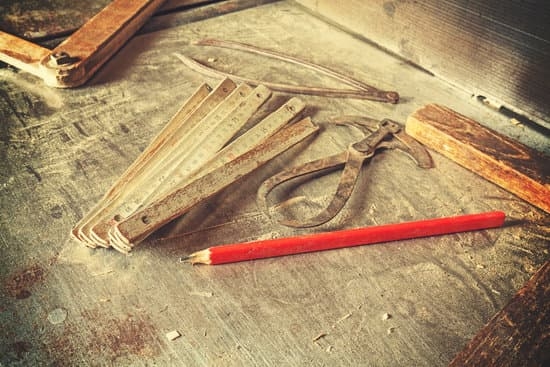What is a rebate in woodwork? When it comes to woodworking, rebates are a fundamental joint that serves many purposes in creating strong and seamless connections between pieces of wood. In this introductory section, we will explore the definition, importance, benefits, and different types of rebates used in woodwork.
A rebate in woodwork, also known as a rabbet in North America, is essentially a rectangular recess or groove cut into the edge or end of a piece of wood. This type of joint is commonly used to join two pieces of wood together at right angles or to create a ledge for attaching other components securely. Rebates not only add strength and stability to woodworking projects but also provide a clean and professional finish.
Using rebates in woodworking projects offers several benefits. Firstly, they help reduce the amount of visible glue and fasteners needed, resulting in a neater appearance. Secondly, rebates can increase the overall strength of joints by providing more surface area for adhesives to bond with. Additionally, incorporating rebates allows for precise alignment when joining pieces together, ensuring accuracy and consistency in your work.
Definition and Explanation of a Rebate in Woodwork
In woodworking, a rebate, also known as a rabbet, is a type of joint or groove that is cut into the edge or the face of a piece of wood. This joint is created by removing a portion of the wood material to create a step-like indentation. The primary purpose of a rebate in woodwork is to provide an edge for joining two pieces of wood together to form a strong and secure connection.
Rebates are commonly used in various woodworking projects such as making drawers, cabinets, picture frames, and other furniture pieces. They are particularly useful for creating seamless joints between different components of a project, such as attaching backs to cabinets or creating door panels. By using rebates in woodworking, you can achieve clean and precise joints that enhance both the structural integrity and visual appeal of your work.
One key benefit of incorporating rebates in woodworking projects is the ability to conceal joints within the structure of the piece. This not only results in a more aesthetically pleasing finish but also helps to protect the joints from external elements that could compromise their strength over time. Additionally, creating rebates allows for easier assembly of components during construction, making the overall process more efficient and streamlined.
Importance and Benefits of Using Rebates in Woodworking Projects
A rebate, also known as a rabbet, is a type of joint in woodworking that involves cutting out an area of material along the edge of a board or panel. This creates a groove or step along the edge, allowing another piece of wood to fit into it snugly.
This joint is commonly used in various woodworking projects for its strength, versatility, and aesthetic appeal. In this section, we will discuss the importance and benefits of using rebates in woodworking projects.
One of the main advantages of using rebates in woodworking is their ability to create strong joints between two pieces of wood. By providing more surface area for glue to adhere to, rebates ensure a secure bond that can withstand significant weight and pressure. This helps to increase the overall durability and stability of furniture pieces or structures created with this joint technique.
In addition to their structural benefits, rebates also offer aesthetic advantages in woodworking projects. By concealing joints within the structure of a piece rather than leaving them exposed on the surface, rebates can create a cleaner and more polished look.
This allows for seamless transitions between different components of a project, enhancing its overall visual appeal. Additionally, by eliminating the need for visible screws or nails, rebates contribute to a more professional and refined finish that showcases the craftsmanship of the woodworker.
Different Types of Rebates Used in Woodwork
In woodworking, a rebate, also known as a rabbet in American English, is a technique that involves cutting a step or recess into the edge of a piece of wood. This creates a ledge or shoulder on the material, which can be used for various purposes in woodworking projects. There are several types of rebates commonly used in woodwork, each serving a specific function and adding versatility to your creations.
Here are some different types of rebates used in woodwork:
- Square Rebate: This is the most basic type of rebate where the step cut is at a right angle to the surface of the wood. It is commonly used for joining panels or creating inset cabinet doors.
- Stopped Rebate: In this type of rebate, the cut does not run all the way to the end of the material but stops before reaching it. Stopped rebates are often seen in picture frames or boxes where a clean finish is desired.
- Lipped Rebate: A lipped rebate involves leaving an overhang or lip on one side of the step cut. This type of rebate is useful for creating flush-fitting doors or drawers in furniture making.
Understanding the different types of rebates and when to use them can greatly enhance your woodworking skills and expand your design options. Each type offers unique advantages and can be utilized in various ways to achieve different aesthetics and functionalities in your projects. Experimenting with these different types will allow you to explore new possibilities and improve your craftsmanship in woodworking.
When incorporating rebates into your woodworking projects, consider how each type can contribute to the overall structure and appearance of your piece. By mastering the various techniques for creating different types of rebates, you can elevate the quality and precision of your work while enhancing both the strength and visual appeal of your creations.
Tools and Techniques for Creating Rebates
When it comes to creating rebates in woodwork, having the right tools and techniques is essential for achieving precise and professional results. A rebate, also known as a rabbet in North America, is a groove or recess cut into the edge or face of a piece of wood. This allows another piece of wood to fit into it snugly, creating a strong joint.
Tools for Creating Rebates
There are several tools commonly used for creating rebates in woodworking projects. One of the most popular tools is the rebate plane, which is specifically designed for cutting rebates with precision. Other tools that can be used include a router with a straight bit, a table saw with a dado blade, chisels, and even hand saws. The choice of tool will depend on the size of the rebate needed and personal preference.
Techniques for Creating Rebates
The technique used to create a rebate will depend on the type of tool being used. For example, when using a rebate plane, you would start by marking out the depth and width of the rebate on your piece of wood. Then, you would carefully guide the plane along the edge to remove material until you reach the desired depth.
When using a router or table saw, you would need to set up jigs or guides to ensure accurate cuts. It’s important to work slowly and steadily to avoid any mistakes or tear-out.
Finishing Touches
Once the rebate has been cut using your chosen tool and technique, it’s essential to clean up any rough edges or imperfections. You can use sandpaper or a chisel to refine the surface and make sure that the joint fits together smoothly.
Additionally, applying glue before joining the pieces will help strengthen the bond between them. Taking care in both creating and finishing your rebates will result in durable and visually appealing woodworking projects that showcase your skills as a craftsman.
Common Mistakes to Avoid When Working With Rebates
Not Paying Attention to Measurements
One common mistake that woodworkers make when working with rebates is not being precise with their measurements. A rebate must be accurately sized to fit the corresponding piece it will join with, whether it is a door frame, cabinet, or shelf. Failing to measure correctly can result in gaps or misalignments that can compromise the structural integrity of the project. Taking the time to double-check measurements before cutting the rebate is crucial in ensuring a perfect fit.
Ignoring Grain Direction
Another mistake to avoid when working with rebates is ignoring the direction of the grain in the wood. Wood expands and contracts depending on its grain direction, and this can affect how well a joint holds over time. When creating a rebate, it’s essential to consider the direction of the grain and align it accordingly to prevent issues like warping or splitting. By paying attention to grain direction, you can create more durable and long-lasting joints.
Rushing Through the Process
One of the most significant mistakes woodworkers make when working with rebates is rushing through the process. Creating a rebate requires precision and attention to detail, which can be compromised if you try to rush through each step. It’s crucial to take your time, follow each step carefully, and make any necessary adjustments along the way. By taking your time and being patient with the process, you can avoid costly mistakes and ensure a high-quality finished product.
By avoiding these common mistakes when working with rebates in woodworking projects, you can improve the overall quality and durability of your creations. Taking care with measurements, considering grain direction, and being patient throughout the process are essential for success. Mastering these techniques will enhance your woodworking skills and allow you to create beautifully crafted pieces that will stand the test of time.
Examples of Woodworking Projects That Use Rebates
Rebates are a common woodworking joint that provides strength and stability to various projects. In simple terms, a rebate in woodwork involves cutting a channel or recess along the edge or end of a piece of wood. This creates a step-like profile that allows another piece of wood to fit into it snugly, creating a strong bond when glued together.
One of the most common examples of woodworking projects that use rebates is constructing wooden frames. Picture frames, door frames, window frames, and even cabinet frames often utilize rebates to join the different parts together securely. By incorporating rebates into these projects, woodworkers can ensure that the joints are durable and long-lasting.
Another popular use of rebates in woodworking is in creating shelves. When building cabinets or bookcases, adding rebates to the sides or back panels can make assembly easier and provide extra support for holding the weight of items placed on the shelves. This technique not only enhances the overall strength of the structure but also adds a professional touch to the finished piece.
| Woodworking Project | Use of Rebate Joint |
|---|---|
| Picture Frames | To join frame pieces securely |
| Cabinets | To create strong and stable shelf supports |
In essence, mastering the art of using rebates in woodworking opens up endless possibilities for creating sturdy and visually appealing projects. By understanding how to properly design and cut rebates, woodworkers can elevate their craftsmanship and produce high-quality pieces that stand the test of time. Whether you are a beginner or experienced woodworker, incorporating rebates into your projects can greatly enhance both their structural integrity and aesthetic appeal.
Tips and Tricks for Mastering Rebates in Woodwork
When it comes to mastering rebates in woodwork, there are a few tips and tricks that can help you achieve clean and precise results in your woodworking projects. One important tip is to always measure twice and cut once when creating rebates.
Since rebates involve removing material from the edge or face of a piece of wood, accurate measurements are crucial to ensure a perfect fit. Taking your time to measure carefully before making any cuts will help prevent costly mistakes and wasted materials.
Another helpful tip for mastering rebates is to use the right tools for the job. While some woodworkers may opt for a chisel and mallet to create rebates by hand, investing in a router with a rebate bit can provide more consistent and efficient results. Additionally, using a marking gauge or cutting gauge can help you accurately establish the depth of your rebate, ensuring a clean and professional finish.
It’s also essential to practice proper technique when creating rebates in woodwork. When using a router, make sure to move it slowly and steadily along the edge of the wood to avoid splintering or tear-out. For hand-cut rebates, maintain a steady hand while chiseling out the material and take your time to ensure precision. By honing your skills and practicing regularly, you can become more comfortable and proficient at creating rebates in your woodworking projects.
Conclusion
In conclusion, incorporating rebates into your woodworking projects can greatly enhance your skills and the quality of your final pieces. Understanding what a rebate is in woodwork and how to properly create them can open up a world of possibilities when it comes to design and construction. By utilizing rebates, you can create stronger joints, cleaner edges, and more intricate details in your work.
The benefits of using rebates in woodworking are manifold. Not only do they provide structural support to your projects, but they also add visual interest and complexity to your designs. By mastering the use of rebates, you can elevate the level of craftsmanship in your work and create pieces that are both functional and beautiful.
To truly excel in woodworking with rebates, it is essential to practice proper technique and invest in high-quality tools. Avoiding common mistakes such as incorrect measurements or uneven cuts will ensure that your projects turn out exactly as planned. With dedication, patience, and a willingness to learn, you can take your woodworking skills to new heights by incorporating rebates into your projects.
Frequently Asked Questions
What Is a Rebate Joint Used for in Woodworking?
A rebate joint in woodworking is commonly used to join two pieces of wood at a right angle, creating a strong connection. This joint involves cutting a groove into one piece to fit the edge of the other piece, resulting in a flush and secure attachment.
What Is Rebating Wood?
Rebating wood refers to the process of cutting a groove or recess along the edge or face of a piece of wood. This technique is often used to create joints in woodworking, allowing for pieces to fit together seamlessly for added strength and stability in various projects.
What Is Rebated Joinery?
Rebated joinery involves using rebates or rabbets to join wooden components together securely. This type of joinery is popular in woodworking due to its simplicity and effectiveness in creating strong connections between pieces of wood. By incorporating rebates into projects, craftsmen can ensure their creations are both durable and aesthetically pleasing.

Hi everyone! I’m a woodworker and blogger, and this is my woodworking blog. In my blog, I share tips and tricks for woodworkers of all skill levels, as well as project ideas that you can try yourself.





